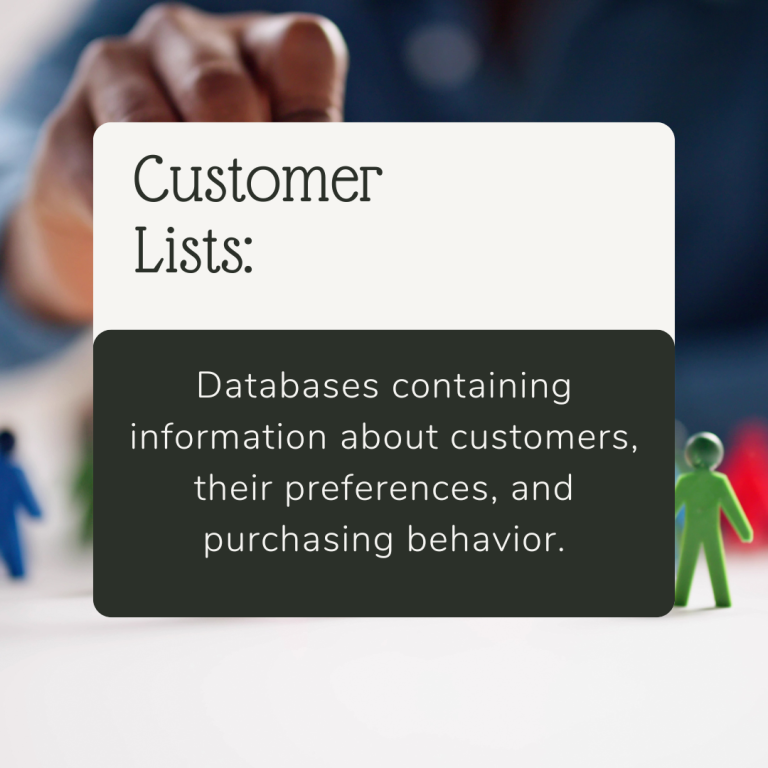
Investing in asset stocks represents a dynamic strategy for wealth accumulation and financial security. These stocks grant ownership in companies holding valuable assets such as real estate, infrastructure, natural resources, or intellectual property. Navigating the nuances of asset stocks is pivotal for investors aiming to diversify their portfolios and seize long-term growth prospects. In this extensive guide, we unravel the intricacies of asset stocks, exploring fundamental concepts, advanced strategies, and indispensable considerations for prosperous investing.
Definition and Basics
Asset stocks represent ownership in companies that hold valuable assets such as real estate, infrastructure, natural resources, or intellectual property. Unlike other types of stocks, which may derive their value primarily from earnings or growth prospects, asset stocks derive their value from the intrinsic worth of the assets they own. This characteristic makes them unique investment vehicles, often prized for their stability and potential for long-term growth.
Types of Asset
-
Tangible Assets:
Tangible assets are physical assets with a tangible presence that can be seen, touched, and quantified. These assets include real estate, equipment, inventory, and natural resources. Tangible assets often play a crucial role in business operations, serving as the backbone of production, distribution, and revenue generation. They typically have intrinsic value and can be bought, sold, or used as collateral for securing loans. However, tangible assets also require ongoing maintenance and may depreciate over time, necessitating careful management to maximize their value and utility.





-
Intangible assets
Intangible assets are non-physical assets that lack a tangible form but possess economic value and contribute to a company's competitive advantage. Examples of intangible assets include intellectual property, such as patents, trademarks, and copyrights, as well as brand equity, goodwill, and customer relationships. Unlike tangible assets, intangible assets are not easily quantifiable and may not appear on a company's balance sheet unless they are acquired through a transaction. Intangible assets are often associated with innovation, creativity, and market positioning, driving long-term value creation and differentiation in increasingly knowledge-based economies. Proper management and protection of intangible assets are crucial for sustaining competitive advantage and fostering growth in today's digital and information-driven business environment.




Advantages of Asset Stocks
-
Diverse Benefits:
Asset stocks offer investors exposure to a diverse range of assets, including real estate, infrastructure, natural resources, and intellectual property. Diversifying a portfolio with asset stocks can help reduce overall risk by spreading investments across different asset classes and industries. -
Inflation Hedge:
Certain asset stocks, such as those invested in real estate and natural resources, can act as a hedge against inflation. The value of these assets tends to appreciate over time, helping investors preserve purchasing power and maintain the real value of their investment returns in inflationary environments. -
Stable Income Generation:
Many asset stocks, such as Real Estate Investment Trusts (REITs) and utility companies, provide stable and predictable income streams in the form of dividends or distributions. These companies often generate consistent cash flows from their underlying assets, making them attractive options for income-oriented investors. -
Long-Term Growth Potential:
Asset stocks have the potential for long-term capital appreciation, particularly as the underlying assets appreciate in value over time. Investments in infrastructure, real estate development, and natural resource exploration can yield substantial returns over the long term, especially in growing or emerging markets. -
Tangible Asset Backing:
Asset stocks are backed by tangible assets with intrinsic value, providing investors with a degree of security and reassurance. Even in adverse market conditions, the underlying assets retain value, offering a level of downside protection for investors.
Disdvantages of Asset Stocks
-
Market Volatility:
Asset stocks can be subject to fluctuations in asset prices and market conditions, leading to volatility in their valuations. Economic downturns, changes in supply and demand dynamics, and regulatory developments can all impact the performance of asset stocks. -
Illiquidity:
Some asset stocks, such as certain real estate investments or infrastructure projects, may have limited liquidity compared to more traditional stocks or financial instruments. This lack of liquidity can make it challenging for investors to buy or sell their positions quickly, potentially leading to delays or unfavorable pricing when liquidating assets. -
Regulatory Risks:
Asset stocks are often subject to regulatory oversight and government policies that can affect their operations, profitability, and valuation. Changes in zoning laws, environmental regulations, tax policies, or industry regulations can impact the investment outlook for asset stocks and introduce uncertainty for investors. -
Complexity and Due Diligence:
Investing in asset stocks requires thorough due diligence and specialized knowledge of the industries and asset classes involved. Assessing the quality of underlying assets, management expertise, regulatory environment, and market dynamics can be complex and time-consuming, requiring careful analysis and research. -
Sector-Specific Risks:
Different types of asset stocks may be exposed to sector-specific risks that can affect their performance. For example, real estate investments may be sensitive to changes in interest rates or property market conditions, while energy stocks may be influenced by commodity price fluctuations and geopolitical factors. Investors need to understand and manage these sector-specific risks when investing in asset stocks.
Factors to Consider When Evaluating Asset Stocks
-
Asset Quality: Assessing the quality and value of the underlying assets held by the company is essential for evaluating asset stocks. Factors such as asset location, condition, and potential for appreciation play a critical role in determining the intrinsic value of asset stocks.
-
Management Expertise: Competent management is vital for effectively managing and monetizing assets. Strong leadership, operational efficiency, and strategic vision are key indicators of management expertise. Investors should evaluate management’s track record, experience, and alignment with shareholder interests when considering asset stocks.
-
Regulatory Environment: Understanding how regulatory changes can impact the valuation and profitability of asset stocks is crucial for risk management. Changes in zoning laws, environmental regulations, tax policies, and industry standards can affect the operating environment and investment outlook for asset stocks.
Start Small and Monitor Performance:
Beginning your investment journey with caution can set a solid foundation for long-term success. Here’s how to approach it:
-
Start Small: Investing a small amount of capital initially allows you to ease into the market without exposing yourself to significant risk. This approach enables you to gain experience and confidence gradually.
-
Gradually Increase Investments: As you become more comfortable with investing and gain insights into market dynamics, consider gradually increasing the size of your investments. This incremental approach allows you to scale up your portfolio in alignment with your growing confidence and understanding.
-
Regular Monitoring: Monitoring the performance of your investments is crucial for tracking progress towards your goals and identifying any necessary adjustments. Set aside time regularly to review your portfolio and assess how your investments are performing relative to your expectations.
-
Adjust Portfolio as Needed: Based on your performance assessments and evolving market conditions, be prepared to make adjustments to your portfolio as needed. This may involve reallocating assets, rebalancing your portfolio, or making strategic investment decisions to stay aligned with your investment goals and risk tolerance.
Set Investment Goals:
Defining clear investment goals provides direction and purpose to your investment strategy. Consider these key aspects:
-
Long-Term Wealth Accumulation: If your objective is to build wealth over the long term, focus on investments with growth potential. Look for assets that have the potential for capital appreciation and can generate compound returns over time.
-
Income Generation: For those seeking regular income from their investments, prioritize assets that offer stable and reliable cash flows. Dividend-paying stocks, bonds, and income-focused funds may be suitable options for generating a steady stream of income.
-
Capital Preservation: If preserving your capital is a primary concern, prioritize investments with lower volatility and a focus on stability. Look for assets that provide a hedge against market downturns and offer a level of downside protection.
Assess Your Risk Tolerance:
Understanding your risk tolerance is essential for constructing a portfolio that aligns with your comfort level and investment objectives. Consider these factors:
-
Volatility Comfort Level: Assess how comfortable you are with the fluctuations and uncertainties inherent in the stock market. Evaluate your psychological disposition towards risk and determine the level of volatility you can tolerate without causing undue stress or anxiety.
-
Time Horizon Considerations: Take into account your investment time horizon and financial goals when evaluating your risk tolerance. Longer time horizons may allow for a higher tolerance for risk, as there is more time to recover from potential losses.
-
Financial Situation Analysis: Consider your current financial situation, including your income, expenses, liabilities, and liquidity needs. Assess how much risk you can afford to take with your investments without jeopardizing your financial stability or meeting your short-term financial obligations.
Stay Informed and Seek Professional Advice
Stay updated on market developments, economic trends, and regulatory changes that may impact asset stocks. Consider seeking advice from us, professionals to help guide your investment decisions and optimize your portfolio.
Remember that investing in asset stocks involves risks, including the potential loss of principal, so it’s essential to approach investing with caution and diligence. By following these steps and staying disciplined in your investment approach, you can begin building a diversified portfolio of asset stocks to achieve your financial goals over time.

This article was written by:
Benjamin the Bull
I write about companies that fascinate me and that also offers investors with potential as a long-term position. I primarily focus on the energy and industrial sector but every now and again venture out to other sectors too.
Bull Bear Vector’s Disclosure: Past performance is no guarantee of future results. No recommendation or advice is being given as to whether any investment is suitable for a particular investor. Any views or opinions expressed above may not reflect those of Bullbearvector as a whole. Bullbearvector is not a licensed securities dealer, broker or US investment adviser or investment bank. Our analysts are third party authors that include both professional investors and individual investors who may not be licensed or certified by any institute or regulatory body


